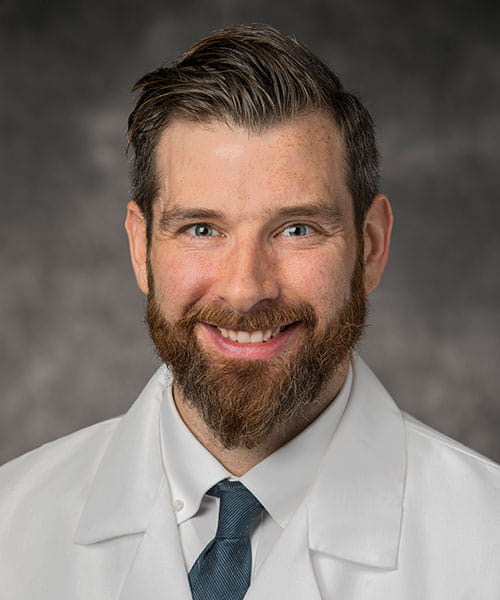New Program at UH Gives Victims of Cardiac Arrest One Last Option for Survival
May 14, 2023
UH Clinical Update | May 2023
Refractory cardiac arrest is definitely something to dread. When the best efforts of the emergency providers and standard advanced cardiac life support measures don’t work to restore a patient’s heartbeat, that’s unfortunately usually the end of the line.
 Colin McCloskey, MD
Colin McCloskey, MDBut maybe it doesn’t always have to be.
A new program at University Hospitals is giving certain cardiac arrest patients one last chance at survival – one of just a handful of such programs around the country and the only one in Ohio. The extracorporeal cardiopulmonary resuscitation (ECPR) program at UH places select cardiac arrest patients on ECMO if they’re not responding to standard advanced cardiac life support (ACLS) measures. Once stabilized, they can then undergo an interventional cardiology procedure or cardiac surgery to address the source of the heart problem.
“These are people who, if not for ECMO, are dead,” says Colin McCloskey, MD, Co-Medical Director of the UH ECMO Program. “But when we put someone on ECMO, we support their heart, lungs and brain with circulating blood that has all the oxygen needed to perfuse all of those tissues. So then, once they're stable, then they can undergo procedures that they otherwise would not have been alive to have been offered.”
Saving a life: It’s been a herculean effort to get the ECPR program at UH off the ground, Dr. McCloskey says. But the rewards of the project are great: The ECPR team just saved its first patient, a man who suffered cardiac arrest while unloading a truck at McDonald’s. A bystander started CPR and the UH EMS team from Cleveland Heights continued life support while transporting the patient to the ED at UH Cleveland Medical Center for care.
When ACLS measures weren’t successful, the UH ED team, including nurses Lucien Covesan, BSN, Andrea Cunningham, BSN, Samantha Lopez, BSN, and Sarah Elliot, BSN, as well as physicians Aaron Lareau, MD, Eniola Gros, MD, and Bejan Kanga, MD, activated the ECPR team. Cardiothoracic surgeon Yasir Abu-Omar, MD, a founding member of the ECPR team, arrived and cannulated the patient for ECMO. Time in the catheterization lab identified the source or the problem – a large lesion in the left anterior descending (LAD) artery – something interventional cardiologist Michael Cunningham, MD, worked to address. The patient recovered in the Cardiothoracic ICU under the care of anesthesia intensivist Connor McNamara, MD, waking up just 24 hours after his cardiac arrest. He was taken off ECMO two days later and is now recovering on the hospital floor, neurologically intact.
“Our program was designed for this patient – a person who has a big heart attack and would otherwise have died except ECMO was available for him,” Dr. McCloskey says. “Now we have our first true success story of a gentleman who was dead, and now he's going to walk out of the hospital.”
Targeted patient population: At UH Cleveland Medical Center, the new ECPR program is limited to adults age 18 to 65 who have certain favorable cardiac arrest characteristics. There has to be a witness to their cardiac arrest who has started CPR, and their initial rhythm as measured by the EMS team needs to be shockable.
“With the witness and the CPR, that reduces the time that the brain is seeing no blood flow and gives them the best chance for them to have a good neurologic recovery, should they go on ECMO and have everything to work out,” Dr. McCloskey says.
He describes the patient selection criteria for ECPR as akin to qualifying for a thrombectomy to treat a stroke. Not every patient is going to qualify. “It just has to be the right kind of arrest around people and able to get to UH in the right timeframe,” he says.
Increasing awareness: That said, while not every cardiac arrest patient will qualify for ECPR, Dr. McCloskey and his team are working to build awareness around Northeast Ohio to increase the number of patients who could benefit from this crucial new offering at UH.
“The next step will be to continue our outreach to EMS folks to get more of these patients,” Dr. McCloskey says. “We offer something in Metro Cleveland that no one else does for this really specific population, so we can potentially save more lives. These are folks that otherwise would have died.”
“In most places, once you fail ACLS, you’re dead,” he adds. “We, by nature of this program that we've set up and continued to optimize, are on the leading edge. And now we have proof that the process is working, and that’s amazing.”


